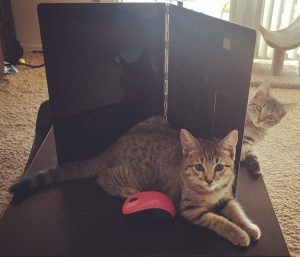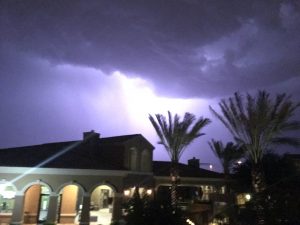I made a new year’s resolution to do 5 minutes a day of three different courses on Memrise, a mostly free language learning site where you can create your own courses or take other people’s. Long time readers may already be familiar with my language learning on Duolingo. I wanted to try out Memrise properly and test how effective the free version was.
Memrise is basically a website and app for making flashcards, but unlikely traditional flashcards, you can be made to produce the results rather than just reassuring yourself that you remember X.
The three particular courses I chose were based on languages I’d found hard to retain with Duolingo alone: Guarani, Hungarian and Romanian. They were harder than languages I’d previously studied for a few reasons. Hungarian and Guarani are both ‘exotic’ in that they aren’t related to anything I had previously studied with Guarani being an indigenous South American language and Hungarian being one of the few non-Indo-Euoprean languages spoken in Europe. To put this into context for those unfamiliar with the term Indo-European, Hindi is more closely related to English than either Hungarian or Guarani is because, like Spanish, German, English, Polish, Punjabi and many other European and Indian languages, it is an Indo-European language with a common ancestor.
Romanian should have arguably been a lot easier than either Guarani or Hungarian from my point of view, being not only Indo-European, but another daughter language of Latin. As such, it is related to the other languages I know well or at least a bit: Portuguese, Spanish, Italian, Catalan and French. Despite being a Latin language, it is, in many ways, the odd one out due to where it evolved. It has retained some much older features that have fallen away in the other Latin languages due to being cut off from its sister languages for a long period. For instance, its word for white is still alb from the Latin albus, while Spanish has blanco, Portuguese has branco, Italian has bianco, and French and Catalan have blanc.
The other thing about Romanian is that Romania is surrounded by countries that speak non-Latin languages, so it naturally has some borrowings from those languages. For instance the Romanian word for ‘rich’ as in wealthy is bogat. In Polish it’s bogaty. This particular borrowing was useful to me as I know some Polish, but my Polish is pretty limited, so this was mostly not that helpful to me.
I created my own Guarani and Hungarian courses based on what I had done on Duolingo. I used a course already created based on the Duolingo Romanian course.
I felt the least successful course was the Hungarian one. There were a few reasons for this. Hungarian is insanely hard. It is probably one of the most complicated languages you can learn. It has many declensions (noun forms) and many conjugations (verb forms). More than that, a lot of the words were just really, really long compared to other languages I’ve studied. I found length of word very closely related to how well the Memrise format worked for me. There are some short words in all three languages that I still know off the topic of my head even though I haven’t seen them in months. For instance, ice in Hungarian is jég. The Hungarian word for goodbye, on the other hand, viszontlátásra, is still not something I can easily produce even being one of the first words in the course and therefore being repeated frequently due to my imperfect production over the course of a whole year.
Memrise do have a feature to help you cope with this called difficult words, but it is behind a paywall. For the first few months, they kept offering it for free as a sample, but have since stopped. This is a disadvantage from Duolingo. Duolingo doesn’t hold any learning content back from non-paying users.
After the feature was fully withdrawn, I found I could generally recognize the very long words as being X, but I would have trouble producing it in its entirety. The format of the course being show a few times and match, then produce, rarely resulted in fully accurate production of the longer words. I would get muddled in the middle or I would confuse r with n and so on. This is in part because the format of the course encourages you to look quickly and carry on rather than pondering over any one word that long. This method works well enough for short to medium length words, but fell down when a word was 8-9 letters or more.
After 365 days of Hungarian, I think I’d do alright on a multiple choice quiz for most of the words, but I cannot speak Hungarian and correctly spelling most of the words I’ve studied is still a challenge. I also don’t have a brilliant feel for the verb endings. I’m a bit better with the noun endings, but still not great. That said, I certainly have more a feel of what makes Hungarian Hungarian than I did 12 months ago. All that said, I have decided to stop studying it for now. It is a language that is sufficiently difficult that it cannot easily be studied lightly with much success.
Surprisingly, Romanian comes in at number 2 in terms of retention and difficulty. This surprised me because of its Latin roots, but also because I have been studying Guarani from Spanish rather than English as the course on Duolingo is only available for Spanish speakers. This was no deterrent. If anything, it was helpful as the version of Guarani that Duolingo teaches, Joporá, is a ‘less pure’ version that has taken in some words from Spanish. The Spanish connection made it very plain to see see the verb conjugations when the core of the word was a Spanish borrowing. I actually now feel more comfortable with present tense Guarani verbs than Romanian ones.
Another thing may be that I did not create the course myself. I have a teaching degree and am well aware of how I learn, so it is not surprising that one of my own courses suited me better. If anything, next year, I may study a bit more Romanian on Memrise, but from Italian or Spanish as there were certain aspects that were maddening in English. I understand why the course creator did it how he did, but things like the section on possessives did not lend itself well to the Memrise format. In order to express the various gender differences in Romanian, the author said things like ai tăi means ‘your, yours (masculine, plur., informal)‘. This was to express the extra grammatical content that doesn’t exist in a natural English translation. It does fully exist in an Italian translation, so if I had made a private course just for me, I would have translated ai tăi as the much simpler i tuoi. This is precisely why I tend to choose to study Latin languages from each other rather than English when possible. I learned both Portuguese and Catalan via Spanish and taking this Romanian Memrise course reconfirmed that is the way to go. I feel being from English actually slowed me down on this module. It took ages even though I fully understood the concept just because it was so easy to misread. I feel if it had been from Italian to Romanian, I could have got through that section much faster and actually know it better.
All and all, I think Memrise is a good way to learn to spell a new language fairly accurately, but I feel you will need to pay or use something in addition to it to really get the full benefit if the language in question has especially long words. If I could only use either Memrise or Duolingo, Duolingo would win hands own. It’s a much more complete tool and 100% of it is available to everyone for free.
I will finish the Romanian course as I am up to 544 of 585 words. I may pick up the pace now to finish sooner. I never did more than what got me to my 5 minute goal as I wanted it to be as accurate a comparison as it could be and I didn’t want to run out of words in the Romanian course as I had no power to add more, while I did add more to the other two courses whenever I ran out.
I think I will go back to just using Duolingo for Guarani, which I really love as a language now. Memrise really did give me a proper feel for this very un-Western language and I feel comfortable going forward now to study it on Duolingo as I had originally intended. Its patterns and quirks feel much more natural than they did 12 months ago. I may also go back to Duolingo for Romanian once I finish the Memrise course I’m doing now.
I think on balance I prefer Duolingo, but Memrise definitely has its uses. If I were to seriously embark on learning a new language, I would use both quite heavily, spending about 70% of my time in Duolingo and 30% on Memrise in the beginning stages of learning. If I were very serious, I would probably pay to get the difficult words feature. If I needed to learn something quickly and well, I think it would be worth it, while, of course, as this was a test for learning three fairly obscure languages for fun, it wasn’t worth it for me in this case.
At any rate, boldog új év, anul nou fericit, vy’apavê ary pyahúre & happy new year!





